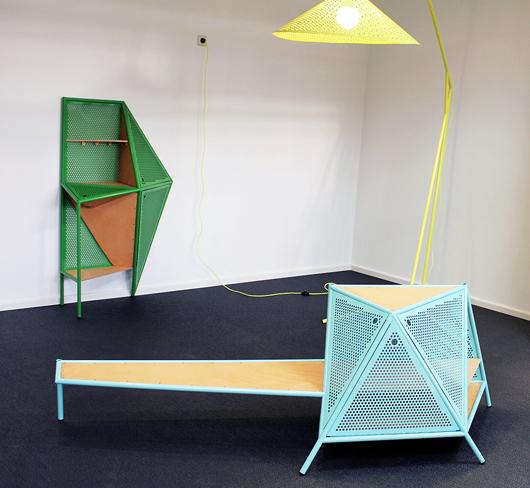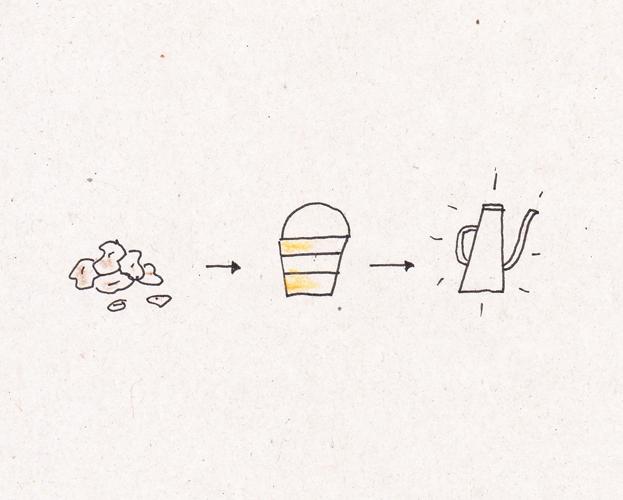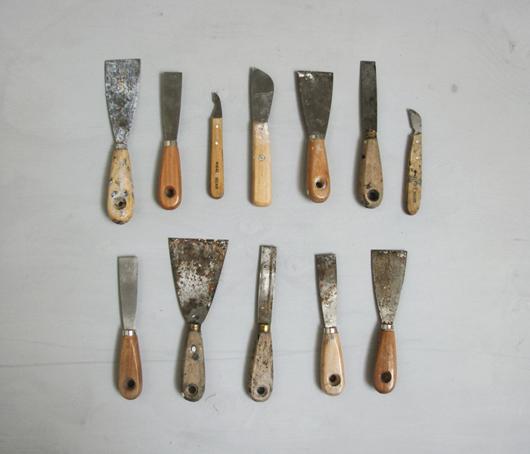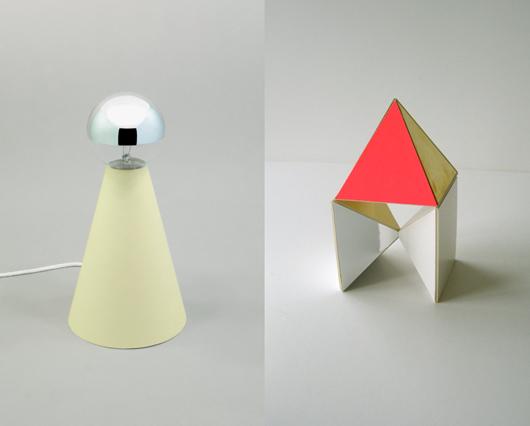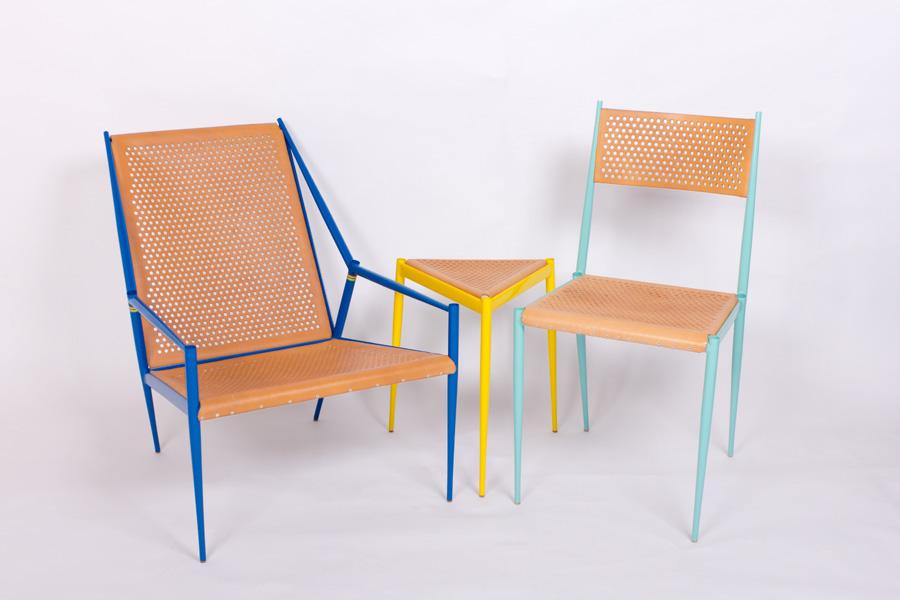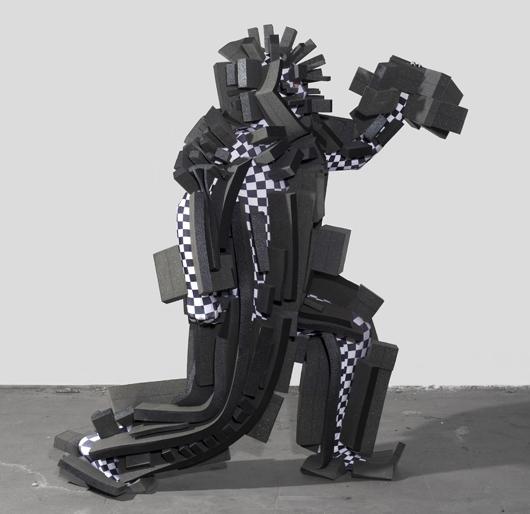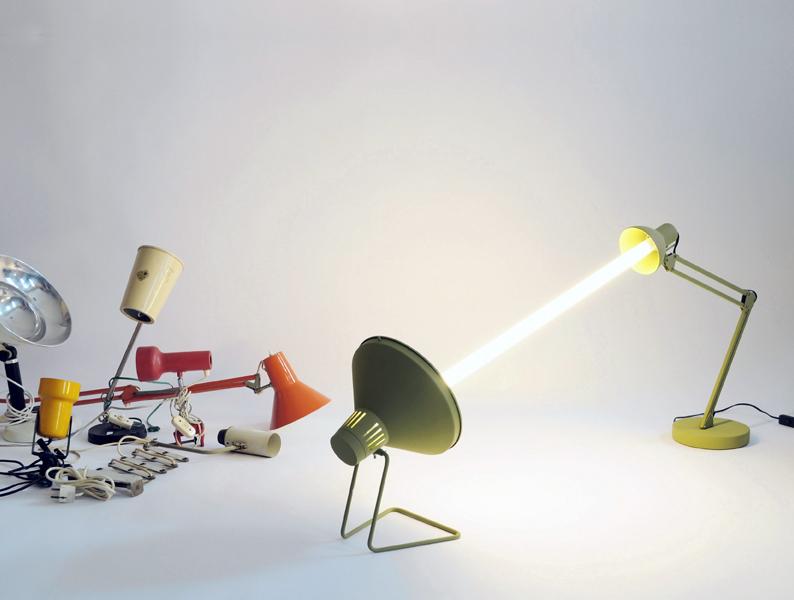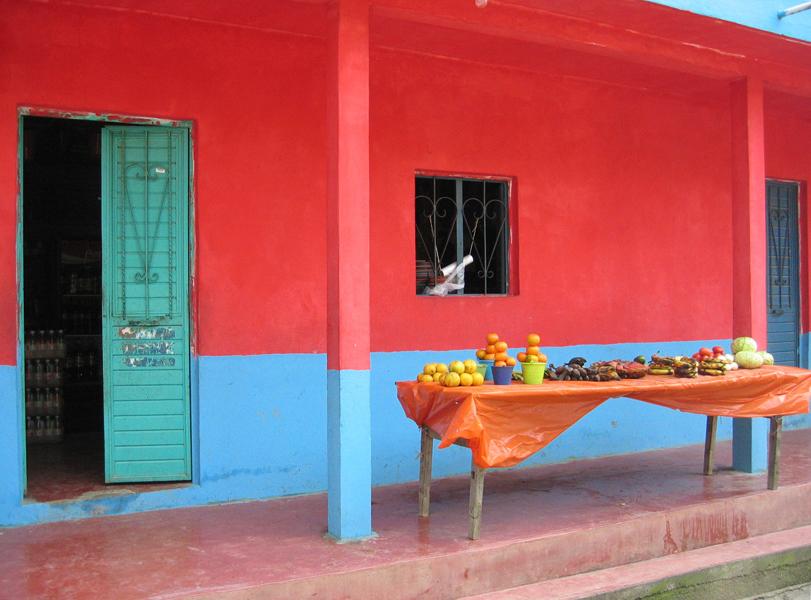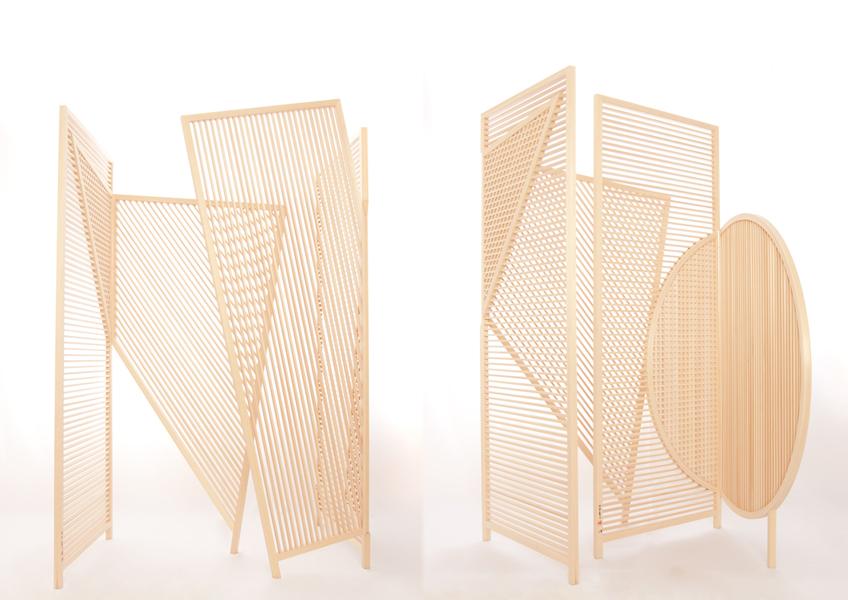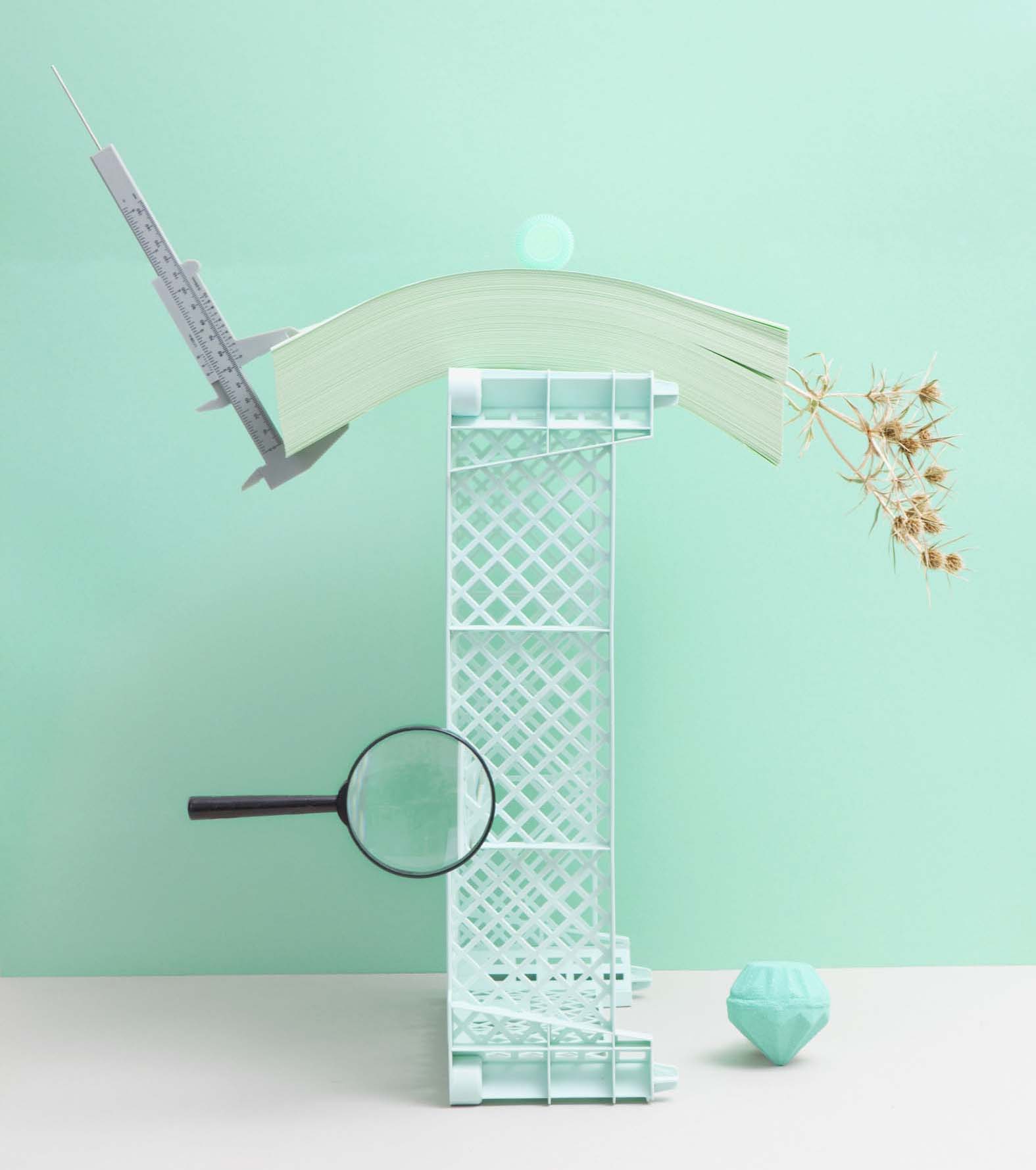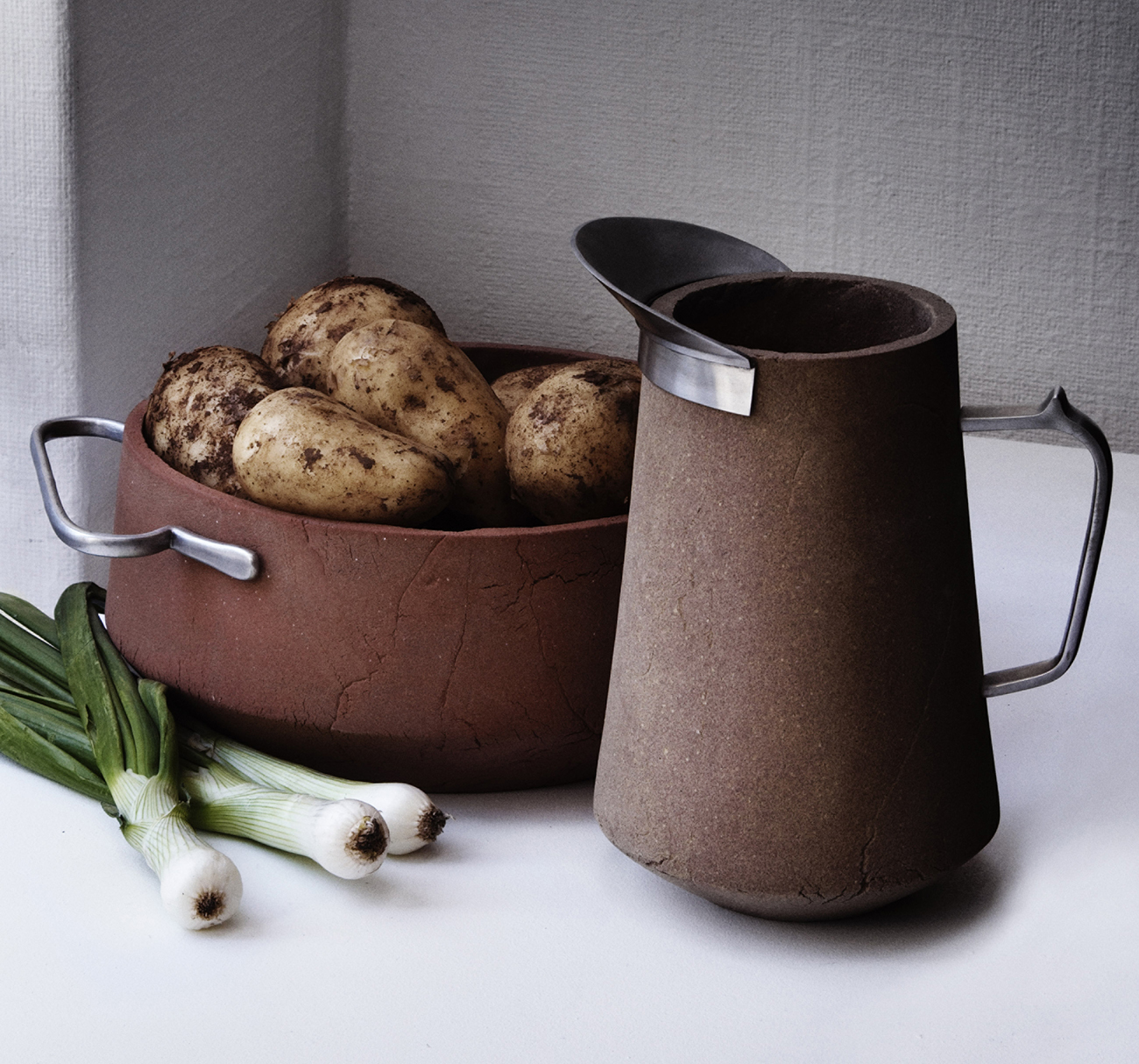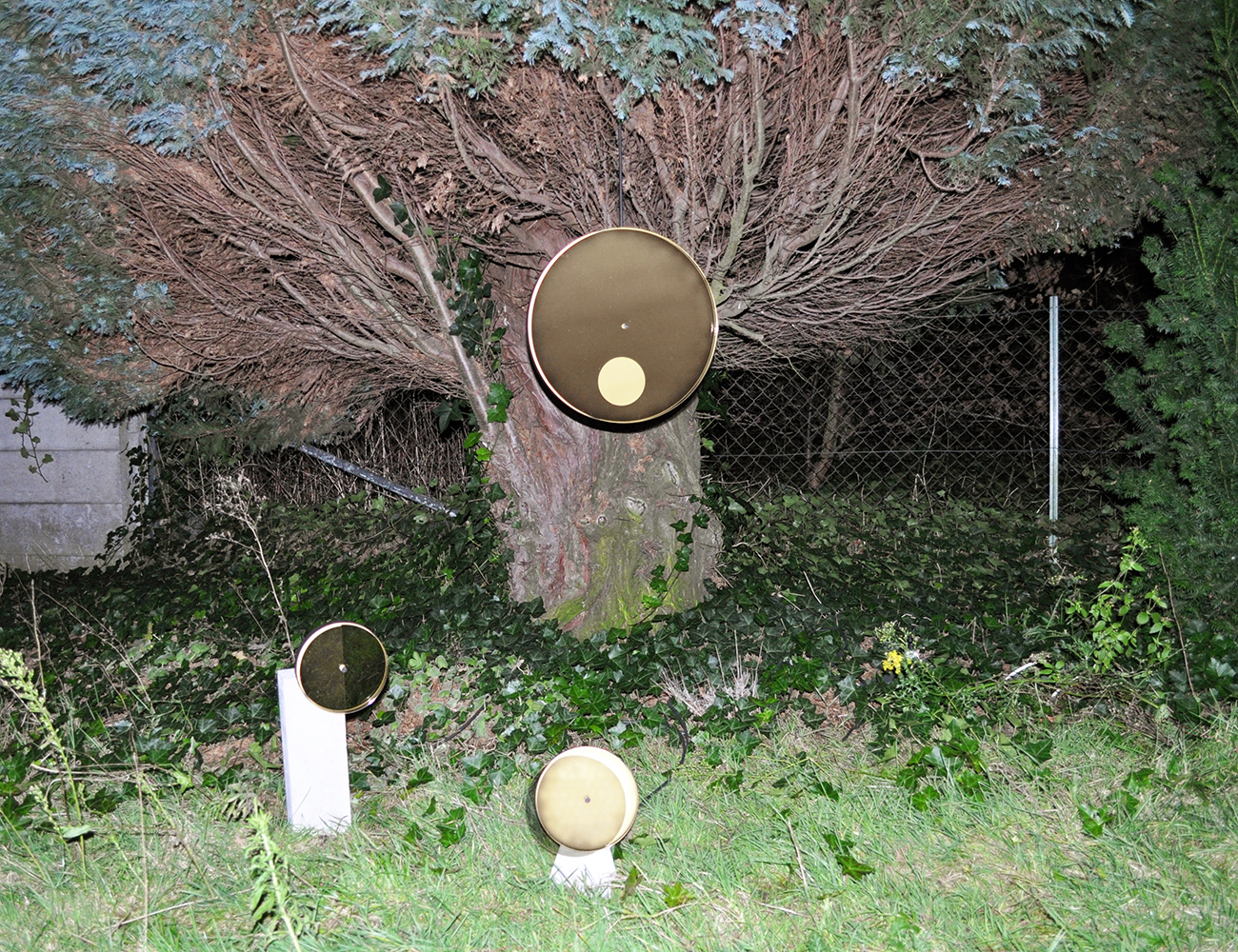
01.09.12
Sighted
OS ∆ OOS’s Syzygy Lamps
Credit where credit is due: The idea for Sight Unseen's newest column, Self Portrait, came from a chat we had recently with Pin-Up editor Felix Burrichter, over lunch in Soho. "Why don't you feature more products?" he asked us, to which we replied that our site is really about process — not products. Felix suggested we ask designers to pose with their latest works, something more personal than just reporting the news. The notion rattled around in our brains for a few months until it evolved into something even more exciting, at least we think so: A series inviting designers and artists to visually present their creations to us in a unique way, photographing them firsthand in a setting or setup that somehow illuminates the ideas behind the object. Our first submission comes from Oskar Peet, who with his partner Sophie Mensen founded the Eindhoven-based firm OS ∆ OOS this fall, launching with a trio of lamps so beautiful and intriguing that we actually feel grateful to Burrichter for inspiring the perfect platform with which to share them. Check out Peet and Mensen's submission above, then read below about how — and why — they got the shot.
